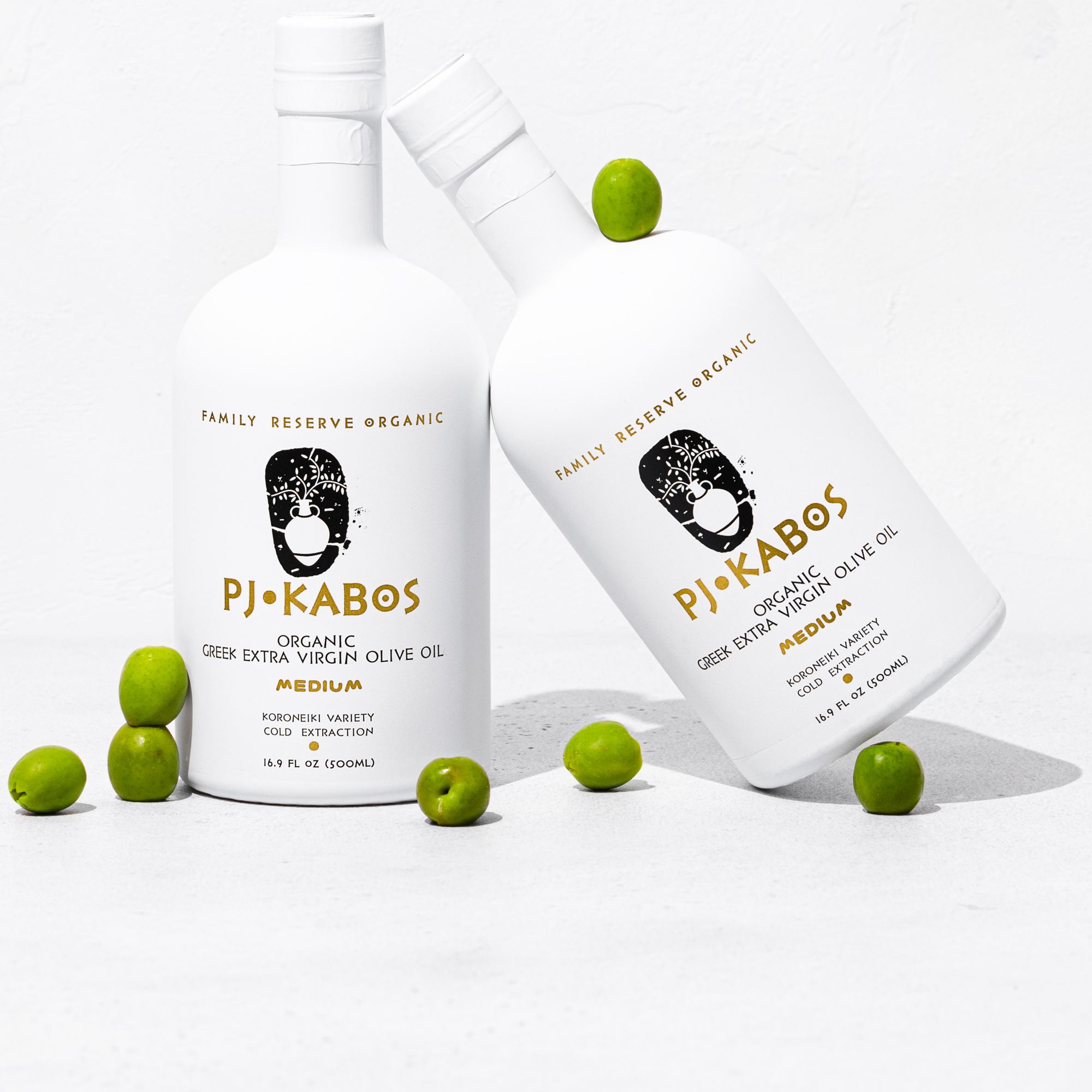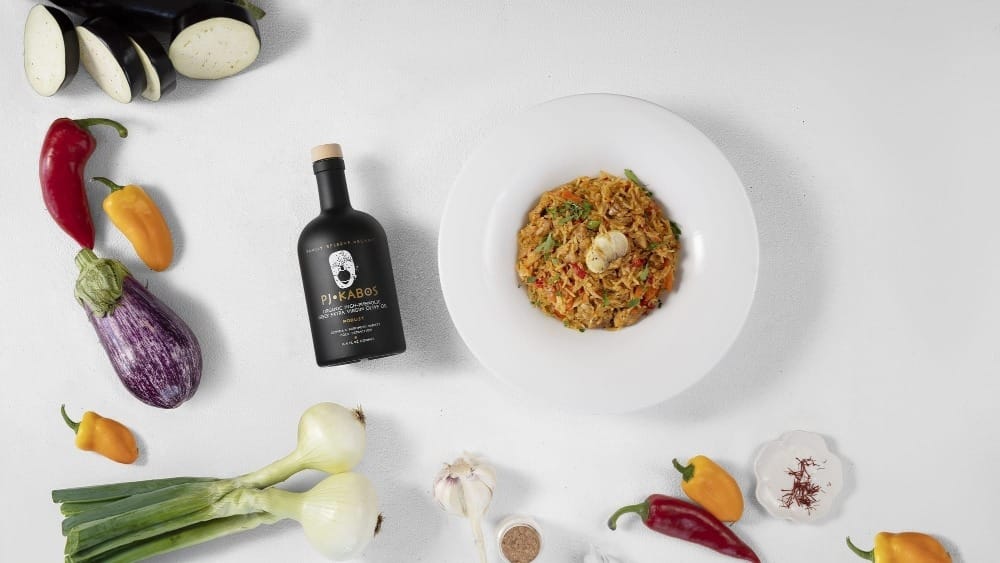Olive oil and Meyer lemons are a match made in gourmet culinary heaven. You might see them commingling in pretty jars on the shelves of gourmet shops, where they’re blended together to make an elegant infused olive oil.
While you could shell out some cash at the shop, it’s actually quite simple (and fun!) to make your own infused Meyer lemon olive oil at home. Here’s how to make your own infused olive oil.
Why Are Meyer Lemons So Special?
Why are these little lemons so coveted in the first place? Originally from China, Meyer lemons are smaller, more orangey (both inside and outside), and smoother-skinned than regular grocery store lemons.
The lemons at the grocery store are typically Eureka lemons or Lisbon lemons. If you live in California or Texas, you might be lucky enough to have a Meyer lemon tree in your own backyard. Meyer lemons are harder to transport than Eureka and Lisbon lemons, which is why they’re less common in markets around the country.
While Meyer lemons still have that tart tart lemon taste, they are sweeter and less acidic than your typical lemon. They are likely too sour to eat for a snack (unless you truly love sour foods), but you can freely slice them and add them to a dish, instead of just using their juice as you would a regular lemon.
It’s not just the flesh that’s so good – the peel is pretty special, too. The peel is thin and less bitter than your average lemon, which makes it a perfect addition to marmalades or recipes that call for a healthy helping of lemon zest. (Don’t worry, your peel won’t be going to waste. The zest is exactly what goes inside your olive oil infusion.)
Meyer lemons are in season from November to March, so there’s only a small window in which we can enjoy them. When you do get your hands on some, you can preserve some of that sweet, lemony flavor in an infused olive oil.
How Is Infused Meyer Lemon Olive Oil Made?
Sure, the bottles from the store are beautiful. But you can impress your friends and family with your gourmet prowess by making your own. As it turns out, it’s not as hard as it looks.
Get your hands on some fresh Meyer lemons.
As mentioned above, the season runs from November to March. If you live in Northern California, Texas, or Florida, finding some will be an easy task. Just check your local farmer’s market in-season and you’re sure to find them overflowing. You might even have a kind neighbor growing some in their backyard!
Those from other parts of the country will have to work a little harder to get Meyer lemons. However, as they’ve gained popularity in recent years, you should be able to find them at a Whole Foods or another organic market.
How much do you need? You’ll need one lemon per cup of olive oil for this recipe.
Choose a good olive oil.
For this job, you’ll want a good quality extra virgin olive oil (EVOO). EVOO is the finest olive oil available, cold-pressed and unrefined. As such, EVOO has the greatest health benefits and the most distinctive flavors. There are also regulations in place that do not allow EVOO to have any flavor defects. Read all about the science-backed health benefits of EVOO here.
When making an infusion, we typically suggest choosing an EVOO with a relatively mild, buttery flavor rather than a bold, peppery profile. However, as lemon goes well with black pepper, you could also decide to go bold. It’s entirely up to you!
Another type of olive oil worth considering is a virgin olive oil. Virgin olive oil is quite similar to EVOO, with one key difference. Both are cold-pressed and unrefined, but virgin olive oils are permitted to have a number of flavor defects. That said, many virgin olive oils have unique, compelling flavors that you might love. If you have a virgin olive oil you can’t get enough of, you can certainly use it here.
Scrub your lemon so it’s super clean.
You’ll only be using the rind of the lemon, so you’ll want to make sure it’s clean as a whistle. Some supermarket produce is coated in wax to make it last longer and look super shiny. You’ll want to make sure all of that is gone before you make your infusion.
Is your lemon feeling a little waxy? Celebrity chef Nigella Lawson suggests placing your lemon in a colander and pouring freshly-boiled water over top. Then, scrub the fruit with a hardy brush. It’s best not to use a sponge or brush that you use for doing dishes, as you don’t want soap residue on the fruit. Then, rinse it with cold water and dry.
Zest your lemon.
Take a zester, or a sharp paring knife if you don’t have one, and remove the zest from the lemon. Rather than confetti-like spirals, you’ll want large strips of lemon zest.
Important: the white pith beneath the surface of the skin is bitter. Be sure to take only the yellow portion from the top, or your olive oil will taste bitter. If any of the white remains on the zest, just go back in and cut it off.
Infuse!
There are two methods for making an olive oil infusion: a cold infusion and a heated infusion. Cold infusions are best for delicate herbs like parsley and fresh basil. Heated infusions, on the other hand, are used for hardier ingredients like thyme, rosemary, and lemon zest.
Place your olive oil (one cup per lemon) in a small saucepan. You’ll want to heat it very gently, never reaching more than 150˚F, according to Bon Appetit. If you’re not measuring your olive oil with a thermometer, a good test is to make sure there are no bubbles, even tiny ones. Overcooking the olive oil can change its flavor profile, potentially giving it a rancid taste.
After the oil is warm, take it off the heat. Add your lemon zest and let it steep, while covered. The longer your lemon zest steeps, the stronger your oil will be. Once the oil is to your taste, remove the lemon peels with a sieve or a pair of tongs.
Bottle your oil.
Choose a glass bottle that suits the volume you’ve made. Using a funnel, pour the olive oil into the bottle and cap it.
If you’re making an olive oil infusion as a gift, you might want to make it extra pretty. Here’s how:
- Choose a decorative bottle from the craft store. A bottle with a cork would look lovely, or you can go with a flip-top bottle (also known as a Quillfeldt stopper) for something a little more user-friendly.
- Before you pour the olive oil, roll a couple pretty pieces of lemon zest lengthwise and push them into the bottle. Keep in mind that the lemon will impart more lemon flavor as it sits, so it’s best not to go overboard.
- Use a funnel to pour the olive oil into the bottle and cap it.
- Wash the exterior of the bottles to remove any oil and dry them well.
- Want to go above and beyond? You can add a personalized label. Martha Stewart has a template for bottle labels, and even cork tabs for an extra professional fee.
This infusion method will work with other citrus fruits, as well, so you might want to try you hand at making a grapefruit or blood orange olive oil while you're at it.
How Long Does Lemon-Infused Olive Oil Keep?
As this olive oil has fresh ingredients, you’ll want to keep it in the refrigerator and use it within a couple weeks. Olive oil solidifies a bit when kept in the fridge, so you’ll just want to run the bottle under some water and give it a shake before using.
How To Use Meyer Lemon Olive Oil
Now that you have your lemony olive oil infusion, how can you put it to work? As mentioned above, infusions are best used for drizzling and dipping rather than cooking. And olive oil is gluten-free, so you don't have to worry about avoiding ingredients when you're using it. And while olive oils are chock full of health benefits, they do have a relatively high total fat content, so you may want to keep an eye on your serving size and not go overboard. Here are a few ideas:
- Combine it with some salt, pepper, and finely chopped shallots to make a quick lemon vinaigrette for salads. It also goes really well with white balsamic vinegar for some added acidity in salad dressings or marinades. You could even try pairing it with a fruity balsamic vinegar, like a blueberry balsamic or a raspberry balsamic vinegar.
- Use it to top your seafood, like baked fish fresh out of the oven or shrimp cooked on the grill.
- It's delicious on top of pasta dishes, especially fresh-tasting ones with ingredients like goat cheese.
- Drizzle it over roasted or steamed broccoli or artichokes and top with a flurry of freshly-grated Parmesan.
- Use it as a dipping oil. Pour some in a dish, top with some salt and pepper, and serve with some crusty Italian bread and veggies.
- Do you like your dessert slightly savory? Drizzle your infused olive oil over vanilla ice cream and top with a crumbled shortbread cookie.
If all this sounds like a bit too much work, there is another way. You can buy a pre-infused lemon olive oil here.
Sources:
Product placement
PJ KABOS 'Family Reserve Organic - Medium'
High Phenolic and 2022 Gold-Award Winner.
Declared as 'One of the World's Best Olive Oils'.
Click here to shop.





